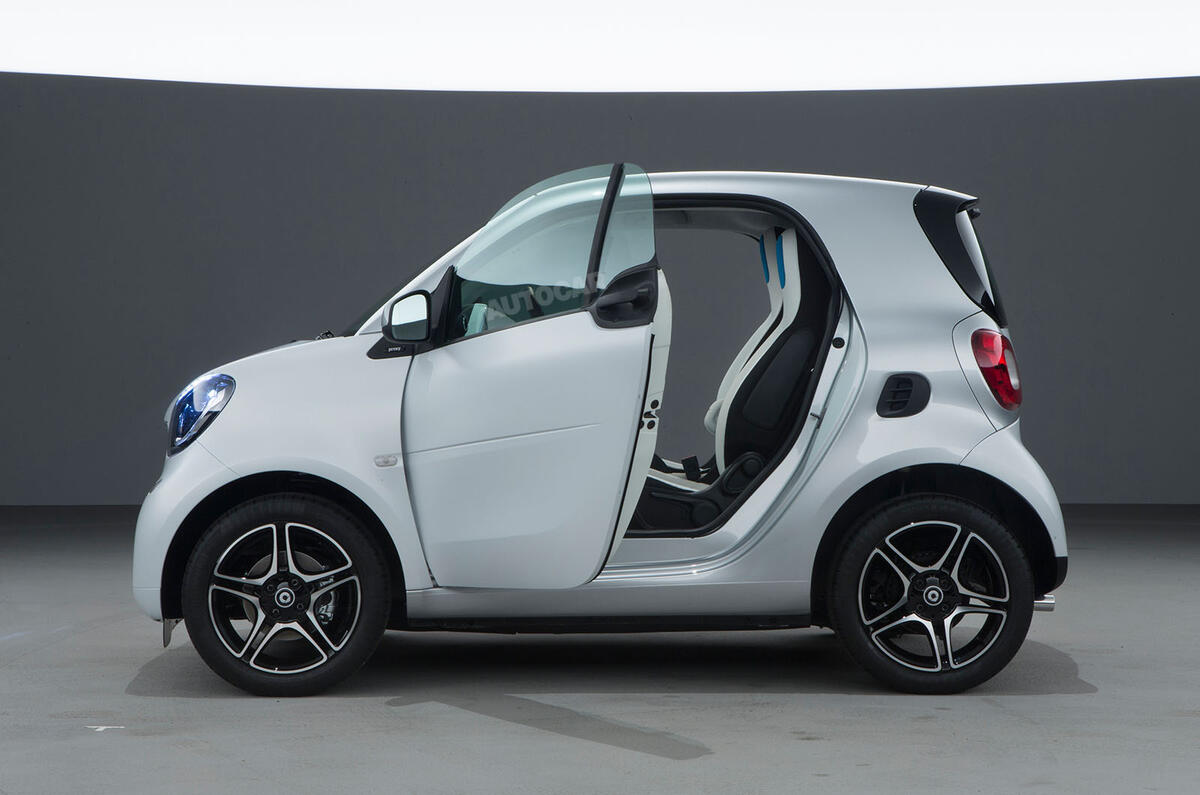At the Birmingham motor show of 1999, not quite 15 years ago, I made one of the daftest car purchases in a lifetime of fairly flakey transactions.
I bought a grey-imported Smart Fortwo directly off the importer’s none-to-impressive stand, paying all the money to have a car that at the time was considered a rarity.
I was so beguiled by the its petite shape and technical wonders (which of us had owned an 2.5 metres long, 599cc turbocharged three-cylinder car before?) that I didn’t care that it didn’t steer or ride very well.
I didn’t even mind that the major plastic panels were lipstick pink, though within a few days I did change those to black, because at the time it was easy.
The car stayed with us at our semi-rural home for three years and was quickly improved in both handing and ride by a fat set of Brabus wheels.
It was also driven uncomplainingly by my missus until two things happened: she started having to ply the motorways to get to a new job (early Smarts were rubbish in crosswinds) and early one morning she came into sharp contact with the world’s largest badger, which shook her up quite a bit. We traded it for a Mercedes soon after.
All these years I’ve retained my tendency to apologise for Smarts and their drawbacks. If you tried hard, you could cope with the slow and obstructive gearchange. If you changed the wheels and tyres you could improve the turn-in to the point where it was almost as good as a so-so conventional car. You could improve the ride just by driving around the worst of the bumps.
Suddenly, I discover that my 15 years of apologies are no longer needed. I’ve driven the new five-speed manual version of the forthcoming Fortwo, and been driven for another 30 miles in a version equipped with the new double-clutch gearbox.
The car, still 2.6-metres long, can cope quite well with bumps. The electric power steering – insofar as you can assess steering while manoeuvring a little car around a carpark – is light, nicely geared and sensitive. The automatic gearbox, no longer a cheapo automated manual, surges smoothly up through the six ratios like any other self-shifting Mercedes.
Meanwhile, the extra 10cm of track and body width make the car more stable in crosswinds (“No longer an issue,” say the engineers) and there’s now ample shoulder room – to go with the headroom and legroom, which were always good.
In short, the baby Smart is heading for a whole new lease of life. Many congrats to Mercedes-Benz, who seem to have got it right, while taking an uncharacteristically long time about it.




Join the debate
Add your comment
It's not for you and it's losing its identity
People who do not need an ultra compact car will not want one, no matter how much the ride and handling are improved. To people like Clarkey and NeufNeuf it will still be a two seater for the price of a four seater. Never going to stand a chance against a Fiesta or Clio or Polo.
For those to whom every cm matters, and you do see plenty of Smarts in super congested cities like Rome, then the extra 25cm length of the second generation and the extra 10cm width of the third will definitely make a difference, but in the wrong way.
"better to be loved by some than to be acceptable to many", in this market.
Don't think...
Well it is getting there.
The IQ has always had a choice of manual box or (excellent) CVT and always handled and rode in a pretty acceptable way. Decent range of engines too - shame we never got the diesel in the UK.
So the Smart may be getting better but the IQ is, in my opinion, still the better package.
@ Clarkey: In this segment, I
Safety credentials
Nothing pitiful about the rear seat accomodation if you are only three up - we did an airport run with three adults a large case and two cabin baggage trolleys in perfectly fine comfort the other day. Admittedly the fourth seat is a token gesture but at least it exists.